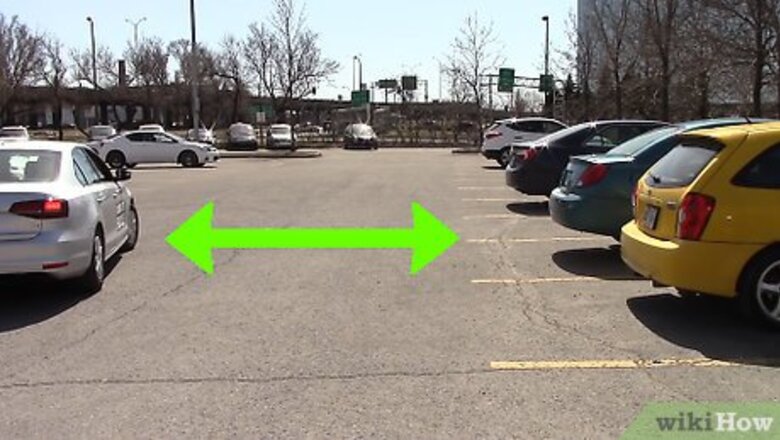
views
Trying to reverse into a parking space? Check out how right here.
- For perpendicular parking, line up your car’s bumper with the closest line of the parking space.
- Turn your steering wheel, lift your foot off the brake, and slowly pull forward into the middle of the space.
- Straighten out your tires when the sides of your vehicle are parallel to the lines and finish pulling into the space.
- Put your vehicle in park and check that it’s completely inside the lines. Make sure you have room on each side to open your doors.
Perpendicular Parking
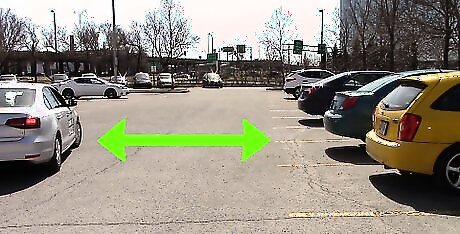
Position your car’s bumper with the first line of the parking space. When you approach the parking spot, keep your vehicle as far to the opposite side as you’re able to go so you have more room to turn. Stop your vehicle as soon as your bumper lines up with the edge of the parking space. Want another way to tell if you’re in the right position? When you look out your window, your shoulder should line up with the line on the parking spot before the one you’re pulling into. If there aren’t any lines marking the spaces in the lot, then make sure there’s about 8 feet (2.4 m) of space between the vehicles before you pull in. If you’re turning into a space on your right, try to stay in the middle of the lane and be careful of oncoming traffic.
Lift off of the brakes and gradually turn your steering wheel. Put on your turn signal to let other drivers know you’re about to pull into the space. Slowly lift your foot off the brake pedal to start inching forward. At the same time, start turning the wheel hand over hand in the direction that you want to turn. Aim the front of your vehicle towards the middle or far side of the space so you have room to straighten out. Make sure there aren't any shopping carts, debris, or other objects in the parking as you pull in. How hard you have to turn the wheel depends on your vehicle. Newer vehicles can usually make tighter turns than older ones. EXPERT TIP Ibrahim Onerli Ibrahim Onerli Driving Instructor Ibrahim Onerli is a Driving Instructor and the Manager of Revolution Driving School in New York City. His mission is to make the world a better place by teaching safe driving. Ibrahim trains and manages a team of over eight driving instructors. He specializes in teaching defensive driving and stick shift driving. Ibrahim Onerli Ibrahim Onerli Driving Instructor Our Expert Agrees: Perpendicular parking is basically a soft L turn. Go to the middle center of your lane, then cut the wheel all the way to the left and pull into the space.
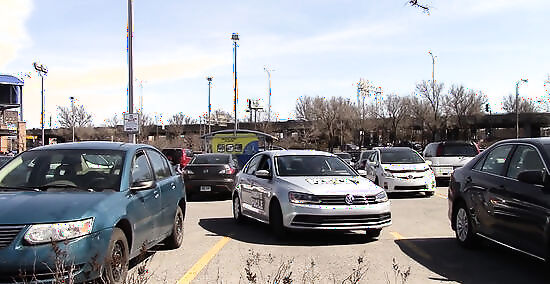
Pull into the space slowly. Keep your steering wheel turned so your vehicle straightens out within the lines of the parking space. Make sure your vehicle is entirely within the parking space and doesn’t overhang. Check if your side mirrors align with the vehicles next to you to see if you’ve pulled in far enough. If there’s a parking space in front of you, make sure your vehicle doesn’t extend into it. Reverse your vehicle slightly to reposition it.
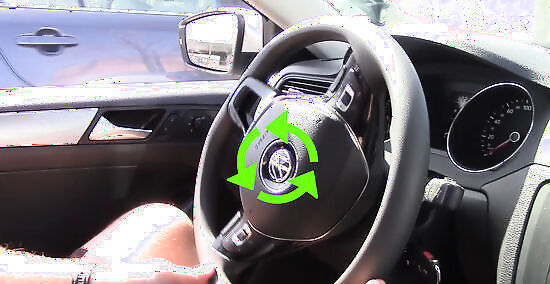
Straighten out your wheels to correct your position. Once the sides of your vehicle are parallel with the lines of the parking space, turn your steering wheel back to its original position and park your car. Check that your vehicle is evenly spaced between the lines and that you have enough room to open your doors. If you’re too close to the line on one side, slowly back straight out of the parking spot and pull back in. Turn your wheel slightly to straighten your vehicle out in the middle of the spot. When you back out of the space, put on your turn signal and slowly reverse your vehicle. When you’re halfway out of the space, turn your steering wheel in the direction you want the back of your vehicle to go.
Angled Parking
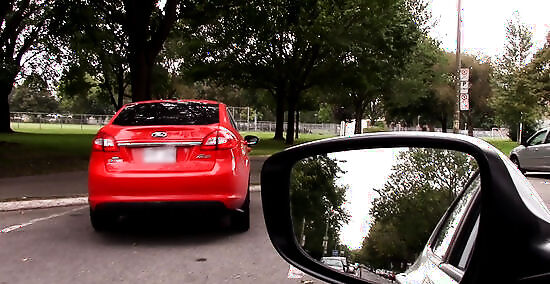
Line up your front bumper with the first line of the parking space. Try to stay about 5–6 feet (1.5–1.8 m) away from the ends of the spaces when you’re parking in an angled spot. Once your front bumper lines up with the edge of the parking space, press on your brakes to stop. Try to find a parking spot away from other vehicles if you want to practice parking without the risk of hitting anyone. Check the parking spot for any abandoned carts or trash that block your way.
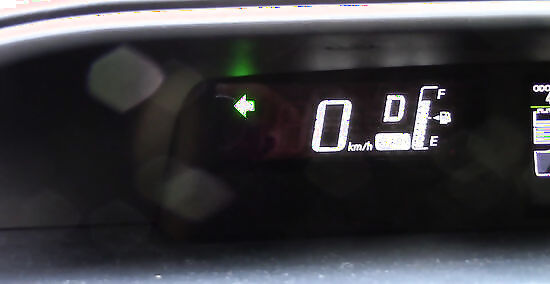
Put on your turn signal. Put on your signal so vehicles behind you know you’re planning on taking the space. Most lots with angled spaces have one-way lanes, so you don’t have to worry about oncoming vehicles.
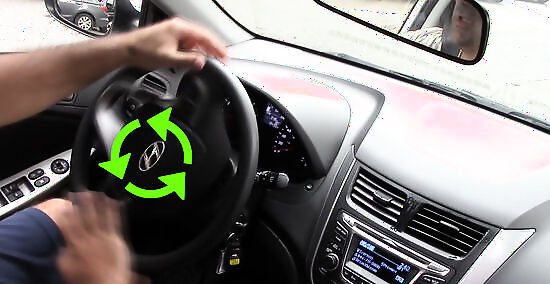
Turn the wheel in the direction of the parking space and pull forward. Spin the wheel about half of a turn and lift off of the brakes to slowly pull forward. Keep the wheel turned so your vehicle angles into the space without crossing over the lines. Try to aim for the middle of the parking spot so there’s an even amount of space on either side of your vehicle.
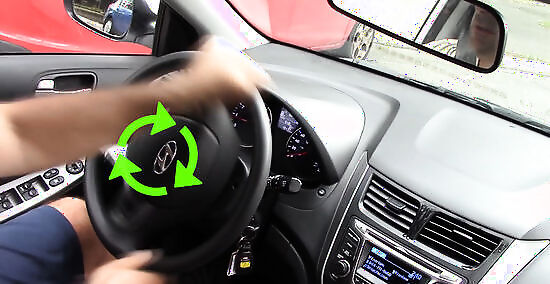
Straighten out your wheels when you’re halfway in the space. As soon as half of your vehicle is pulled in, crank your steering wheel back to the original position to straighten out your tires. Keep pulling in until your vehicle is completely within the parking spot. You want to make sure your wheels are straight so you can back out of your spot straight. Make sure your vehicle doesn’t overhang the front, back, or sides of the spot to avoid getting a parking ticket.
Parallel Parking
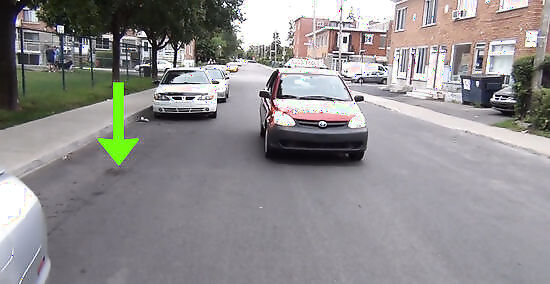
Look for a space where your vehicle fits. Drive up next to the space to see if there’s enough room for you to fit between the vehicles. Make sure the space is about 4–5 feet (1.2–1.5 m) longer than your vehicle so you have room to maneuver in and out of the space. Lots with parallel parking spaces are usually marked clearly with white lines, so it’s easier to know if there’s enough room than if you were parking on the street. If this is your first time parallel parking, look for even larger spaces between vehicles so you have more room.
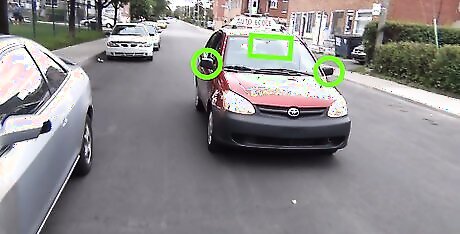
Check your mirrors and put on your turn signal. Look in your rearview mirror to check if someone is close behind you or eyeing up the parking spot. Flip on your turn signal and slow down next to the spot so the people behind you know you plan on parking. If another motorist pulls up behind you, maintain your position. Roll down your window and gesture for them to go around you if they wait behind you.
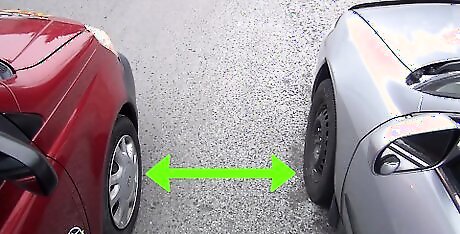
Line your vehicle up with the one in the space in front of you. Slowly pull up next to the vehicle in the parking space ahead of the one where you’re parking. Stay at least 2 feet (0.61 m) away from the other vehicle so you have room to maneuver your vehicle. Pull your vehicle up until your rear bumper is aligned with the one on the other vehicle. If there isn’t a vehicle in the space in front of you, then line your rear bumper up with the front line of your parking spot.
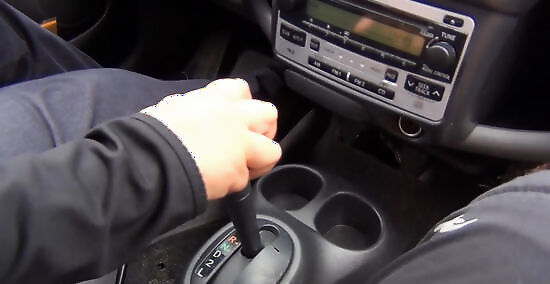
Shift into reverse and check behind you. Keep your foot on the brake as you shift gears. Check your rearview and sideview mirrors, and look over your shoulder to make sure no one is directly behind you so you’re able to back into the space. Keep looking over your shoulder the entire time you’re backing up since you’ll be able to see better than if you used your rearview mirror.
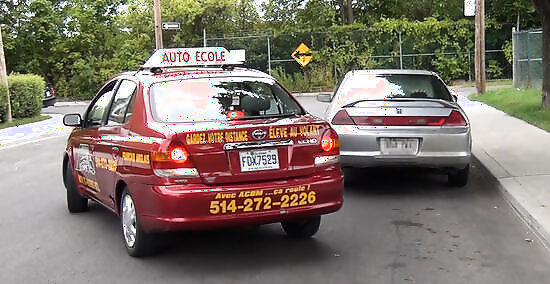
Turn your wheel to the right and release your brakes. Crank your wheel all the way to the right. Slowly lift your foot off the brakes so your vehicle starts moving backward at an angle into the space. Check for other cars and pedestrians while you’re backing up to ensure you don’t hit anything. When your front wheels line up with the back bumper of the vehicle in front of the space, stop your car. Make sure you maintain the distance between the side of your car and the car in front of you so you avoid scraping it.
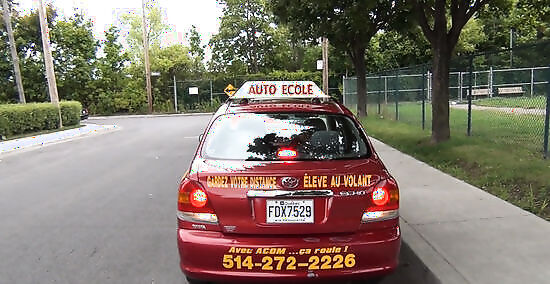
Turn the steering wheel to the left to straighten out into the space. Lift your foot off the brakes again, and turn your steering wheel as far to the left as it can go. Continue reversing into the space as far back as you can go. Switch between watching the front and the back of your vehicle to make sure you aren’t close to another vehicle. If you hit the curb or if you’re close to scraping against another vehicle, stop and pull back out of the spot so you can try again.
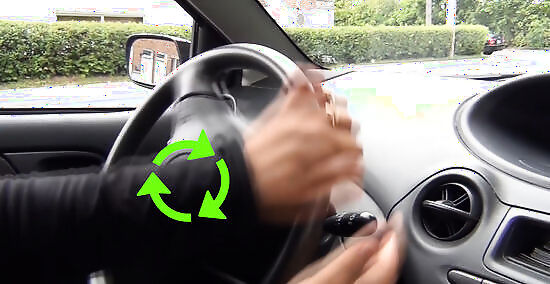
Pull straight forward to even out the space between vehicles. Turn your steering wheel to the right until your tires are straightened out. Move slowly forward towards the curb. As you do this, straighten your car in the space. Leave a few feet of space in front of and behind your vehicle. When you’re finished, just shift into park. Check your passenger side mirror to make sure you’re within 1 foot (30 cm) of the curb when you are done parking.




















Comments
0 comment